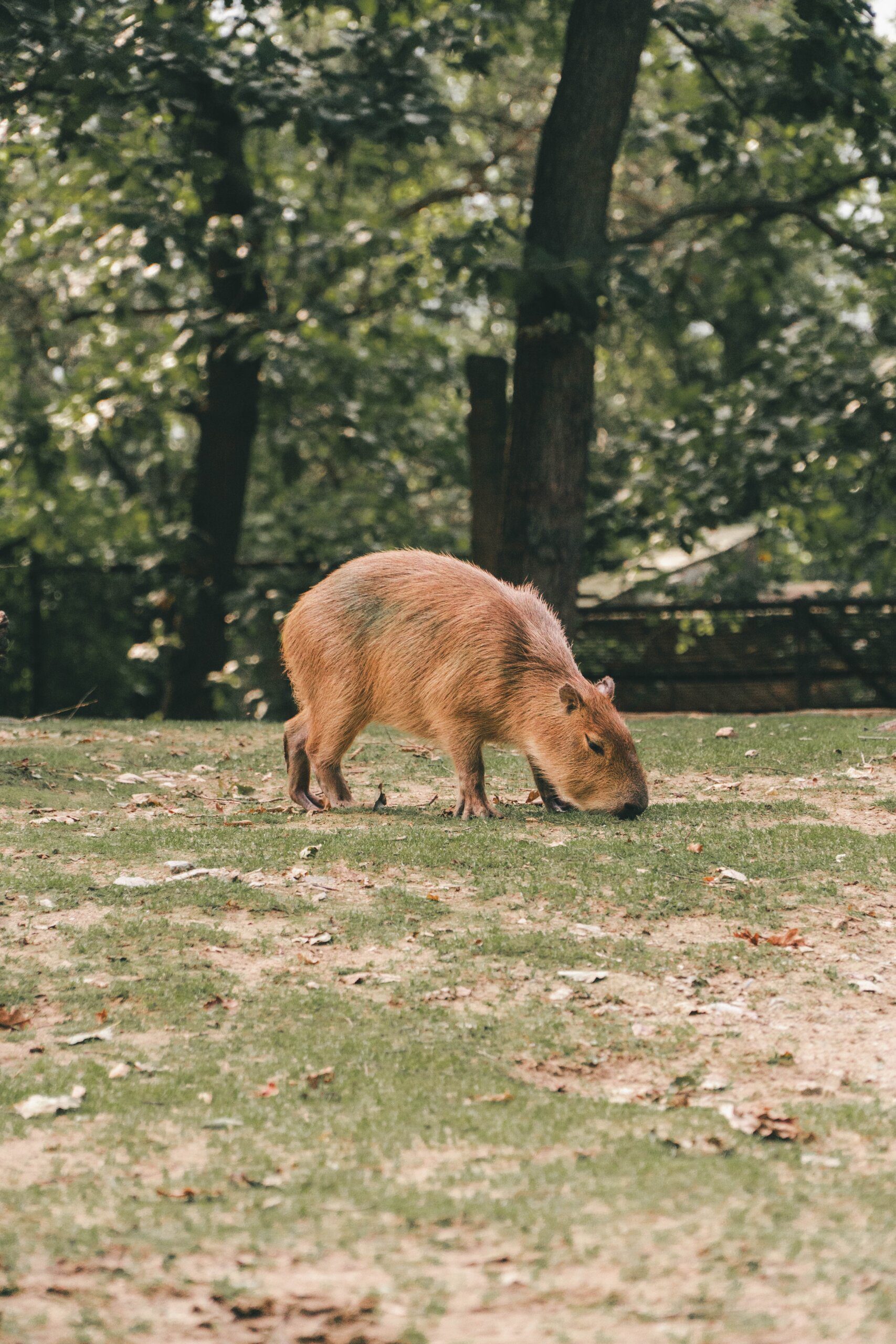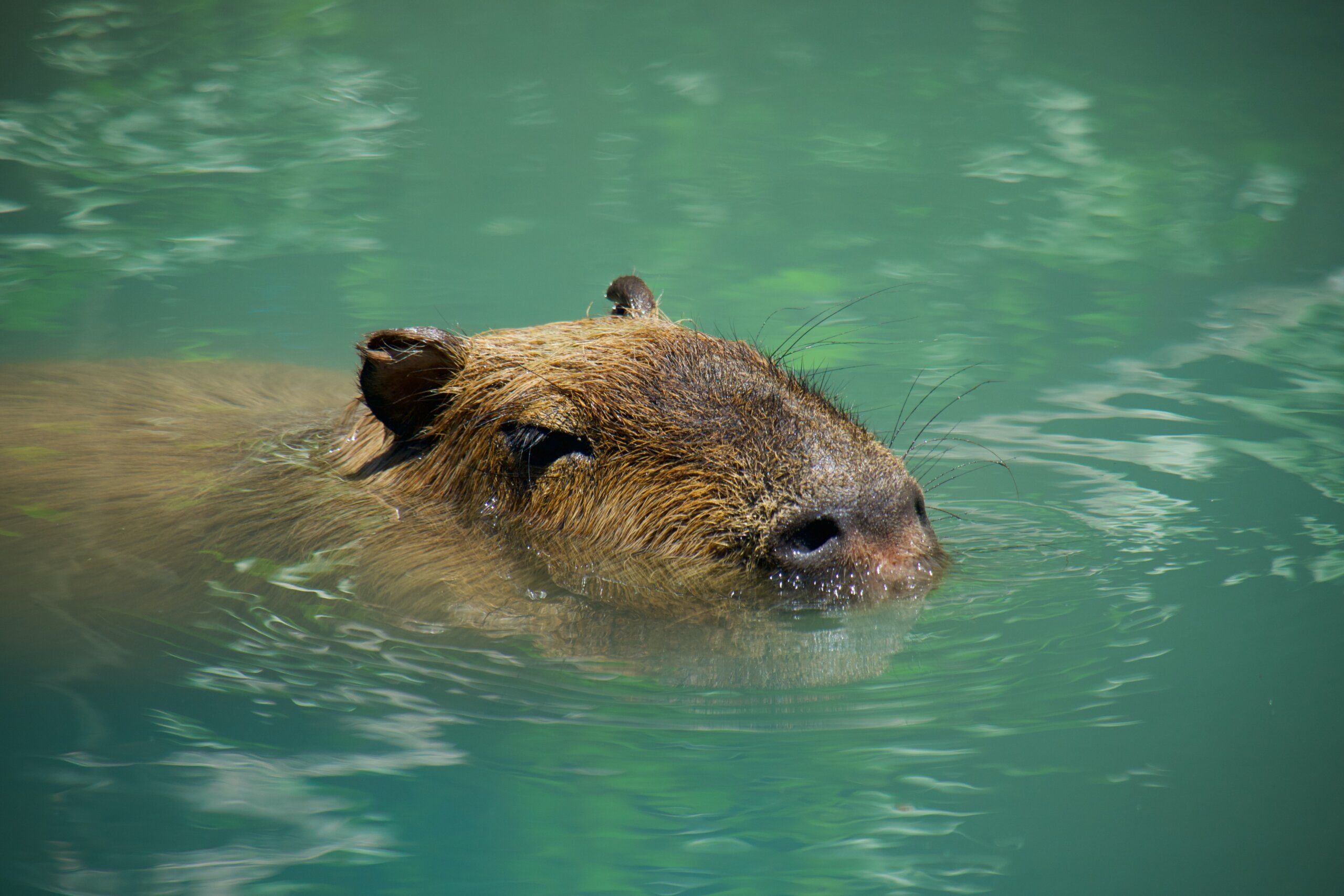Step into the fascinating world of capybaras and prepare to be amazed by their endless fun-filled activities. These adorable creatures, known as the world’s largest rodents, have an uncanny ability to turn even the simplest things into entertainment. From splashing around in water to playing with other capybaras, their antics are sure to bring a smile to your face. So, buckle up and get ready for a joyride through the exciting and amusing realm of capybaras.

Physical Characteristics
Size and Weight
Capybaras are the largest rodents in the world, reaching an average length of 3.5 feet and weighing between 77 and 146 pounds. They have a stout body with short, sturdy legs and a small, rounded head.
Appearance
Capybaras have a unique appearance with dense, coarse hair that varies in color from reddish-brown to grayish-brown. Their eyes, ears, and nostrils are positioned on the top of their head, allowing them to keep an eye out for predators while partially submerged in water. They also have sharp, constantly growing incisor teeth that enable them to feed on vegetation.
Habitat and Distribution
Natural Habitat
Capybaras are semi-aquatic mammals that inhabit a variety of habitats such as savannas, swamps, and densely forested areas. They are most commonly found near bodies of water, such as rivers, lakes, and ponds, where they can easily cool off and escape from predators.
Geographical Range
Originally native to South America, capybaras are found in countries like Brazil, Venezuela, Colombia, and Argentina. They have also been introduced to other regions including Panama, Uruguay, and even parts of Florida in the United States.

Social Behavior
Capybara Groups
Capybaras are highly social animals and are known for their strong social bonds. They live in large groups called “herds” or “troops,” which can consist of 10 to 40 individuals. These groups usually include several adult males, females, and their offspring.
Communication and Vocalizations
Capybaras have a wide range of vocalizations to communicate with one another, including barks, whistles, purrs, and clicks. They also use physical contact and scent marking to establish social hierarchies within their groups. These social interactions are important for maintaining group cohesion.
Diet and Feeding Habits
Herbivorous Diet
Capybaras are herbivores, meaning they primarily feed on plant material. Their diet mainly consists of grasses, aquatic plants, and tree bark. They have specialized teeth and a unique digestive system that allows them to efficiently extract nutrients from their fibrous diet.
Preferred Foods
While capybaras are opportunistic eaters, they do have preferred foods, including tender grasses, water hyacinths, and various types of aquatic vegetation. They can often be seen grazing on riverbanks or wading in shallow waters, using their nimble lips to delicately select and consume their preferred vegetation.

Reproduction and Life Cycle
Mating Season
Capybaras have a mating season that typically occurs during the rainy season when food is abundant. During this time, males will compete for the attention of females by vocalizing, scent marking, and engaging in playful wrestling matches.
Gestation Period
After a successful mating, the female capybara has a gestation period of around 150 days, or approximately five months. Interestingly, capybaras are capable of delayed implantation, meaning the fertilized eggs can wait to implant in the uterus until the most favorable conditions (such as water availability and food abundance) are met.
Offspring
Capybara litters generally consist of 2 to 8 young, called pups. These pups are precocial, meaning they are born fully furred and with their eyes open, ready to explore their surroundings shortly after birth. They are often seen swimming alongside their mother within hours of being born.
Predators and Threats
Natural Predators
Capybaras have a few natural predators, including jaguars, pumas, caimans, and anacondas. They rely on their keen senses, strong social groups, and their ability to quickly enter the water to evade predation. In some cases, adult capybaras may fend off predators by using their sharp teeth and powerful bites.
Human-Induced Threats
Human activities pose a significant threat to capybara populations. Habitat destruction, including deforestation and the draining of wetlands, greatly impacts their natural habitat. Additionally, hunting for their meat, hide, and oil, as well as the capture of capybaras for the pet trade, have contributed to a decline in their numbers.
Capybaras as Pets
Legality and Regulations
While capybaras may seem like adorable pets, it’s essential to understand that they require specialized care and specific legal considerations. The ownership and importation of capybaras as pets vary in different countries and regions. It is crucial to research and comply with local laws and regulations before considering a capybara as a pet.
Caring for a Capybara
Capybaras have specific needs that must be met to ensure their well-being. They require spacious outdoor enclosures with access to water for swimming and grazing on vegetation. A balanced diet consisting of fresh produce and specialized pellets is necessary, along with proper veterinary care, social interaction, and mental stimulation.
Interaction with Humans
Cultural Importance
Capybaras have a significant cultural importance in many South American countries. They are sometimes considered a delicacy in regional cuisines, and their hides and fur are used to make various products. In some indigenous cultures, capybaras are also associated with certain spiritual beliefs and folklore.
Conservation Efforts
Due to the threats posed by habitat loss and overhunting, several conservation organizations and government agencies are working to protect capybaras and their habitats. These efforts include the establishment of protected areas, educational campaigns, and monitoring and research programs to help maintain healthy populations of these fascinating creatures.
The Playful Nature of Capybaras
Bonding with Other Capybaras
Capybaras are known for their friendly and sociable nature. They form strong bonds within their groups, engaging in social grooming and playful behaviors. These behaviors help foster strong group cohesion and create a harmonious social structure.
Games and Activities
Capybaras enjoy a range of games and activities, often involving water. They love to swim, dive, and splash around, using their elongated, webbed toes to navigate the water effortlessly. They can also be seen playing chase or engaging in mock battles, displaying their agility and strength.
Capybaras and Water
Swimming Abilities
Capybaras are incredible swimmers due to their streamlined bodies, partially webbed feet, and their ability to hold their breath for several minutes. They use their swimming skills not only for recreation but also to escape predators and find food. Their aquatic lifestyle has made them well-adapted for life in and around the water.
Hydrotherapy
Capybaras also benefit from the therapeutic properties of water, using hydrotherapy to alleviate stress and heal various health conditions. The buoyancy and warmth of the water provide relief for joint pain and injuries. It also promotes sensory stimulation, overall well-being, and can be an enjoyable activity for them.
In conclusion, capybaras are fascinating creatures known for their large size, unique appearance, and sociable nature. They thrive in a variety of habitats across South America, relying on their keen senses and strong social bonds for survival. While they face threats from both natural predators and human-induced activities, efforts are being made to conserve their populations. Capybaras can make intriguing pets but need specialized care and attention. With their playful nature, love for water, and importance in various cultures, capybaras continue to captivate the hearts of many around the world.



